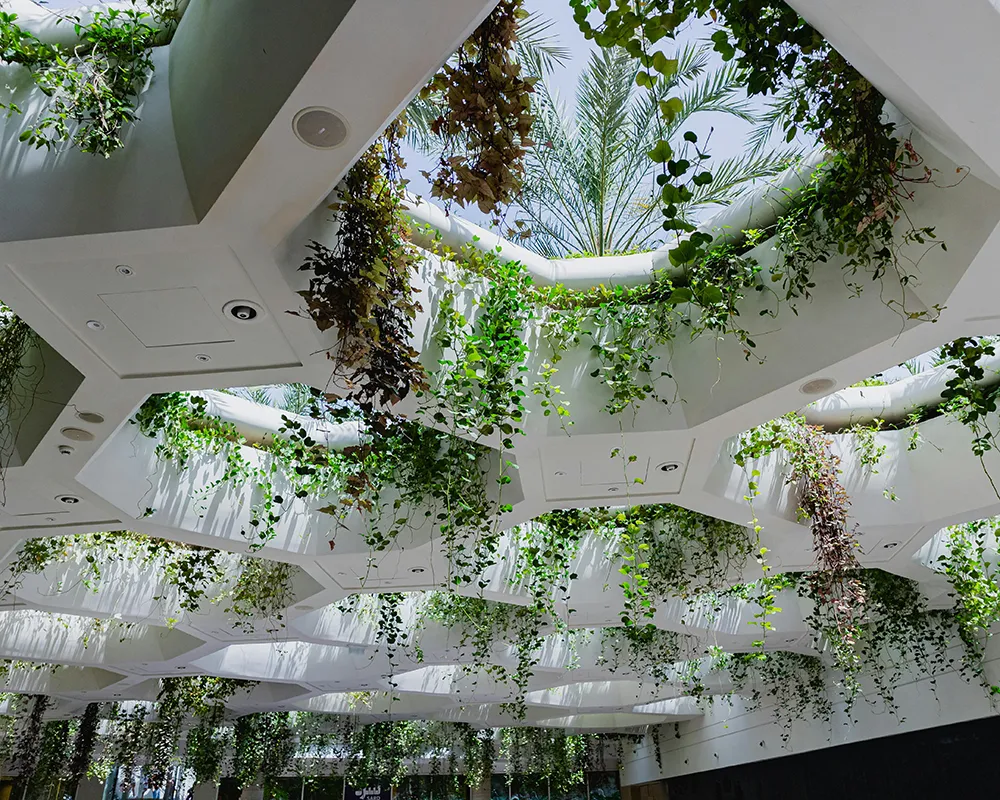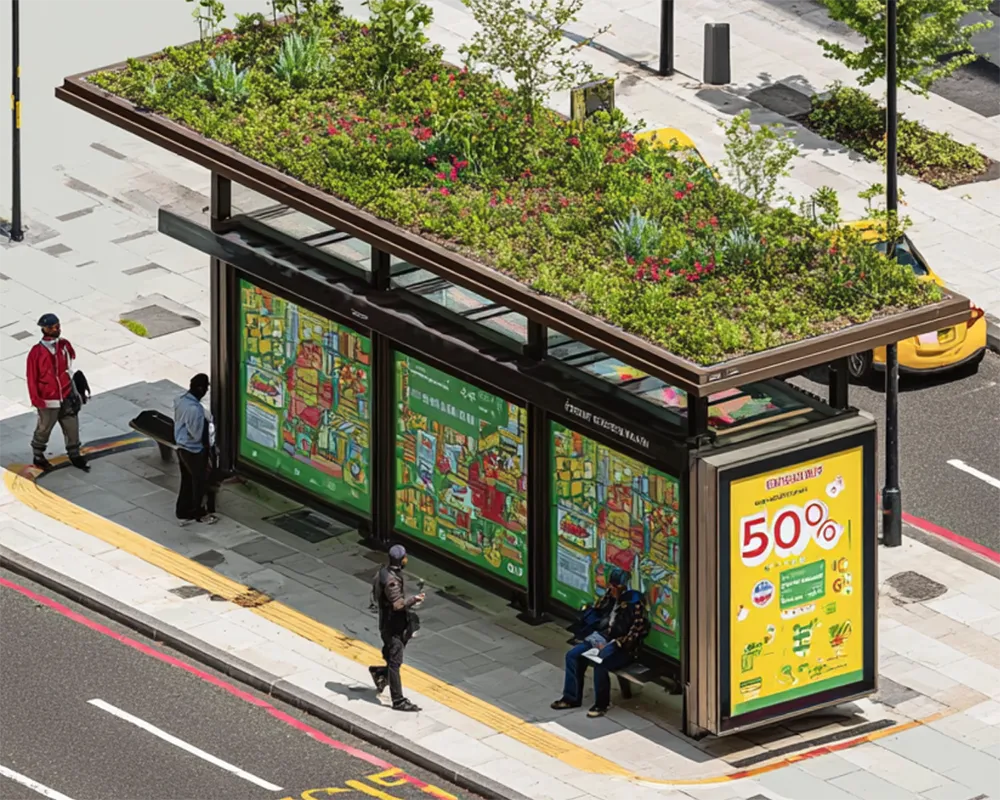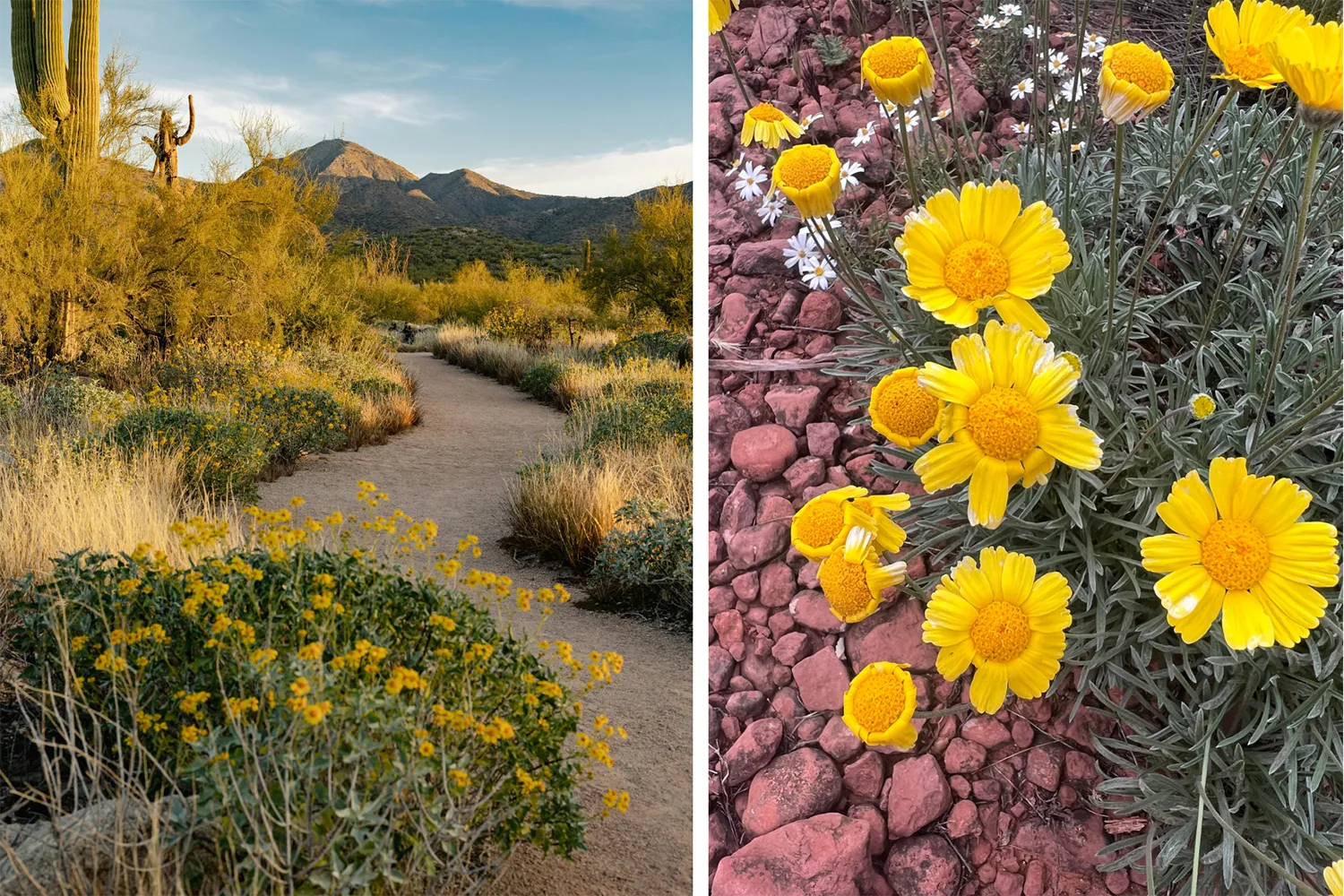Did you know Phoenix is an active part of the Biophilic Cities Network? The benefits of biophilic design are clear when it comes to interiors and buildings, and our awareness of its impact is reaching further every year. Biophilic design has grown into the biophilic cities movement, an approach to urban development that thinks of nature as essential infrastructure.
In this article, we’ll explore biophilic urbanism through an educational summary of Timothy Beatley’s article Biophilia Beyond the Building: Applying Biophilic Urbanism to City Planning to Create Biophilic Cities. We’ll also consider how Beatley’s points can take shape in Arizona cities to make daily life here feel healthier, more vibrant, and more connected to the natural world.

The case for greener cities
When biophilic design goes beyond individual buildings and into our neighborhoods and daily routines, the benefits really add up. Beatley points to three big ones:
- Human health: Regular time spent with nature is fundamental to human health and happiness. Studies show that incorporating greenery into modern architecture or plant design in public spaces can lower stress, boost mental health, and inspire more active lifestyles.
- Social enrichment: Shared spaces with thoughtful plant design give people a space to connect. They become natural gathering spots where neighbors can meet, talk, and build community.
- Biodiversity: Urban landscapes often disrupt local ecosystems, but with smart planning, they can strengthen biodiversity and even provide safe havens for wildlife. This harmony between modern cities and natural landscapes helps everyone thrive.
In Arizona’s fastest-growing cities like Phoenix and Tempe, where heat and sprawl are real challenges, these benefits could make all the difference. Biophilic planning makes communities healthier, cooler, and easier to live in.

Core elements of biophilic cities
As modern cities developed, they pushed nature to the edges. Biophilic cities flip that approach by bringing natural elements into everyday life. Think greener commutes, more lush office spaces, and sidewalks decorated with thoughtful plant design. This shift is both physical and mental: nature stops being a separate place that we visit, but an experience we live within.
- Green infrastructure brings plant design into every layer of the city: tree-lined streets, Plant Walls, patioscapes, green roofs, and connected urban forests.
- Blue infrastructure brings water back to the city through rivers, lakes, restored wetlands, and water features like fountains or ponds.
- Wildlife integration makes ways for other species to thrive, from pollinator pathways and bird habitats to ecological restoration right inside urban neighborhoods.
Let’s build a beautiful, sustainable space that makes a statement.
Transform your commercial property with a stunning Plant Wall or a cooling patios-cape.

Global inspirations
Cities around the world have already begun to model what biophilic cities look like in practice.
- Singapore was one of the first to bring in vertical greenery and sky gardens while designing entire neighborhoods around water features.
- Portland, Oregon has made access to nature an easy daily reality. They’ve preserved the surrounding natural lands while incorporating greenery into city streets, so biophilia is built right into the city.
- Wellington, New Zealand has embraced nature as part of its identity. The city has reintroduced native bird populations and restored ecosystems so that encounters with wildlife are a common part of life.
To view photos of some of the top awe-inspiring biophilic design projects around the globe, such as the Jewel Changi Airport, The Amazon Spheres, and The Eden Project, visit this article written earlier this year.

How to make it happen across Arizona
Phoenix has started leading the way in biophilic urban planning, but there’s still more ground to cover. As Beatley points out, making biophilic cities a reality requires a systemic shift. In other Arizona cities, this means updating public policy to support city-wide biophilic plant design. Equity standards are also necessary to make sure shaded streets, cooling landscapes, and restorative green spaces are not limited to a privileged few but shared with everyone.
Enhancing systems of public transportation is also a major opportunity for places like Tempe, Mesa, Gilbert, and Peoria. This could look like more shaded transit corridors, walkable routes cooled by vertical greenery, and patioscapes that double as gathering spaces. In this context, intentional plant design is also a public health service, as it helps fight the urban heat island effect that makes Arizona summers so intense.

Finally, Beatley argues that collaboration is key. Architects, planners, ecologists, and public health experts all have to work together to design effective biophilic urban systems. Plant Solutions brings horticultural expertise to the table, with access to thousands of desert-adapted species to help plant design thrive in Arizona’s climate while supporting projects at every scale

As Timothy Beatley puts it, biophilic urban planning is “a new kind of city — one where nature and culture are deeply entwined.” Every service we provide at Plant Solutions, from plant design and installation, horticultural services, exterior patioscapes, and Plant Walls or MossWall Art™, is ready to get Arizona there. Together, we can turn our cities into places where nature enriches how we live, work, and connect for generations to come.
Ready to bring the benefits of biophilic design to your space?
Our horticultural experts can help you create a healthier, more vibrant environment perfectly adapted to the Arizona climate.
